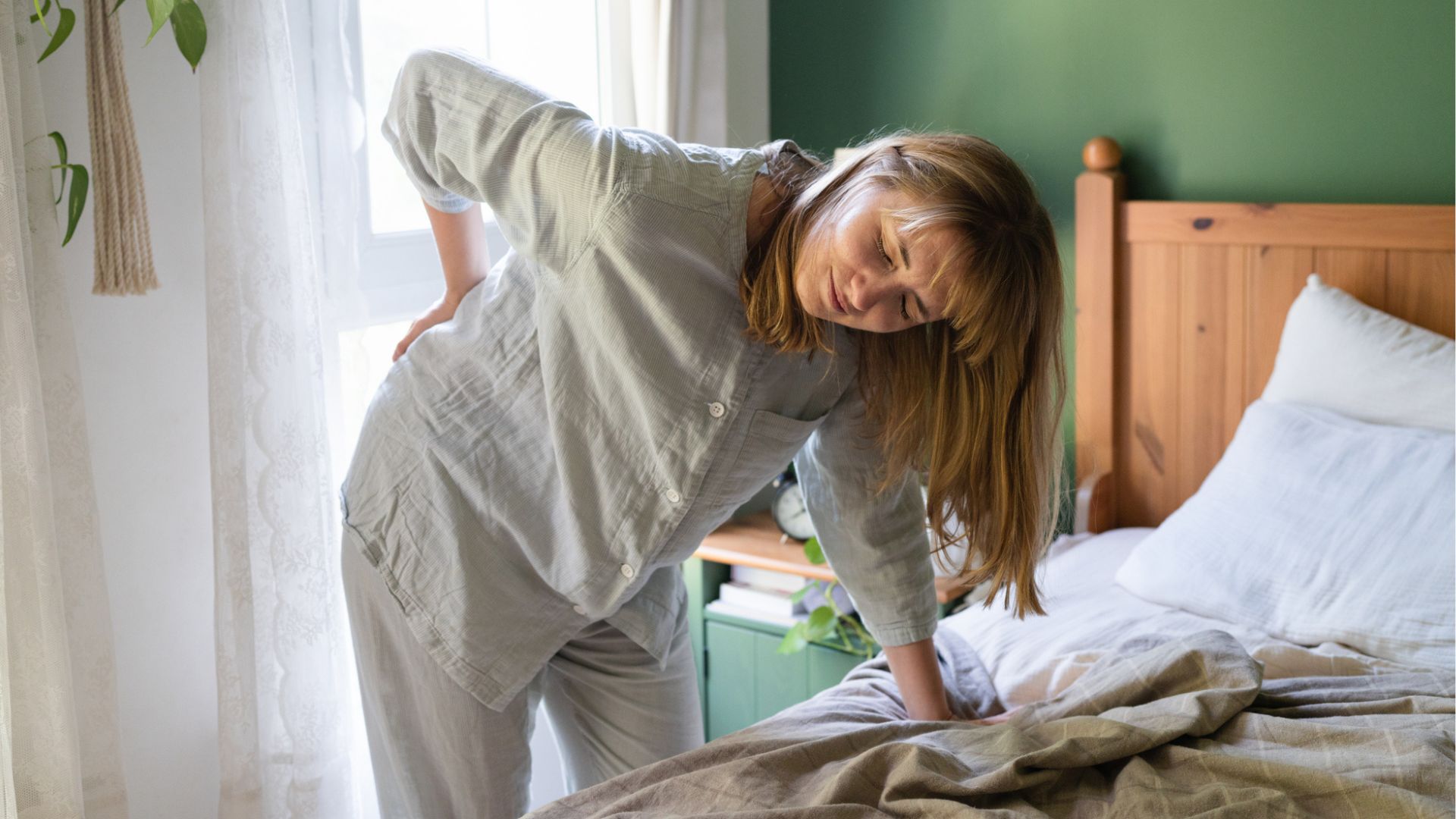How I relieve back tension first thing in the morning—with just two simple moves
Banish back stiffness in just a few minutes


It’s not uncommon to wake up feeling stiff and achy after a night’s sleep. Hours in a static position can leave muscles tight, joints compressed and circulation slow.
One of the best ways to ease that morning tension is to stretch. How you do that might depend on where you feel the tightness. I start my day with the following two moves without fail.
I first discovered these exercises when I was recovering from a bulging disc injury. After receiving a steroid injection to manage the pain and kickstart my recovery, I focused on exercises that promoted spinal decompression and mobility.
According to Zach Smith, doctor of physical therapy and founder of Hidef, these two moves can be beneficial in releasing back tension from general stiffness and minor aches, but not, he emphasizes, if you have significant symptoms or pain.
“These movements feel good because they help articulate the different areas of the spine and improve mobility. However, if you do have a very significant disc injury that is causing referral [pain] into the legs, the flexed positions of these may be too intense.”
Smith recommends starting with two other moves if you have symptoms or pain: nerve gliding, also known as nerve flossing, and the prone press-up with arms overhead.
If you’re experiencing sharp pain in the buttocks or legs, numbness, tingling, bowel or bladder changes, loss of ability to balance or coordinate your legs or any other concerning symptoms, consult a healthcare professional.
Start your week with achievable workout ideas, health tips and wellbeing advice in your inbox.
If your back feels well enough to do the two moves I’m suggesting, here’s an expert guide on how to do them. No gym equipment is needed because you can use furniture or objects from around the house.
1. Countertop stretch
This stretch can be done by gently pulling against a countertop, door handle or fixed surface. It decompresses the spine, providing temporary relief from tightness accumulated overnight, and engages the posterior chain and sciatic nerve pathway.
“Holding onto a counter is nice because it provides a little bit of traction for the spine, which will indeed decompress, relieving the pressure put on the discs between your vertebrae,” says Smith.
“Spinal compression is going to be great for people who have disc-related pathologies. This is why, for most people, lying down when their back hurts helps to alleviate some of the symptoms. This stretch just helps to create that same relief but in a standing position.”
“The decompression mechanically takes pressure off the injured area of the disc, which helps to relieve the pain as a short-term fix.”
However, Smith recommends being mindful of the angle of your back as you stretch. “Going into too much flexion [rounding of your back forward] with traction can cause irritation in the lower back for some people, depending on the condition and severity of symptoms they have.”
2. Elephant walk
This dynamic movement targets hamstring flexibility and improves mobility in the back of the legs, but it’s more than just a hamstring stretch.
It also addresses a lesser-known culprit of morning tightness: neural tension. This is when nerves become compressed or irritated along their pathway from the spine, creating stiffness or pain that people often mistake for tight muscles.
Smith explains in more detail: “Doing this elephant walk is really a dynamic hamstring stretch, but it also glides the neural structure of the posterior leg, which is the sciatic nerve, which becomes the tibial nerve, which then becomes the common fibular nerve that goes all the way down to your foot from your low back.”
So in this one move you get a double whammy: a muscle stretch but also relief of nerve tension. “This gliding motion can help alleviate the tension on the nerve and decrease these symptoms,” says Smith.

Yanar Alkayat is a health and fitness editor, registered yoga therapist and level 3 personal trainer. She founded Yanar Mind & Movement alongside her journalism to offer specialist yoga therapy for people living with long-term health conditions, movement disorders and marginalised communities. Her chair yoga classes are funded by Parkinson's UK and she regularly runs yoga and fitness for refugee and asylum seeker groups in London. Formerly a content editor and fitness product testing manager at Women’s Health, Men’s Health and Runner's World, she continues to write for national print and digital media.
You must confirm your public display name before commenting
Please logout and then login again, you will then be prompted to enter your display name.
